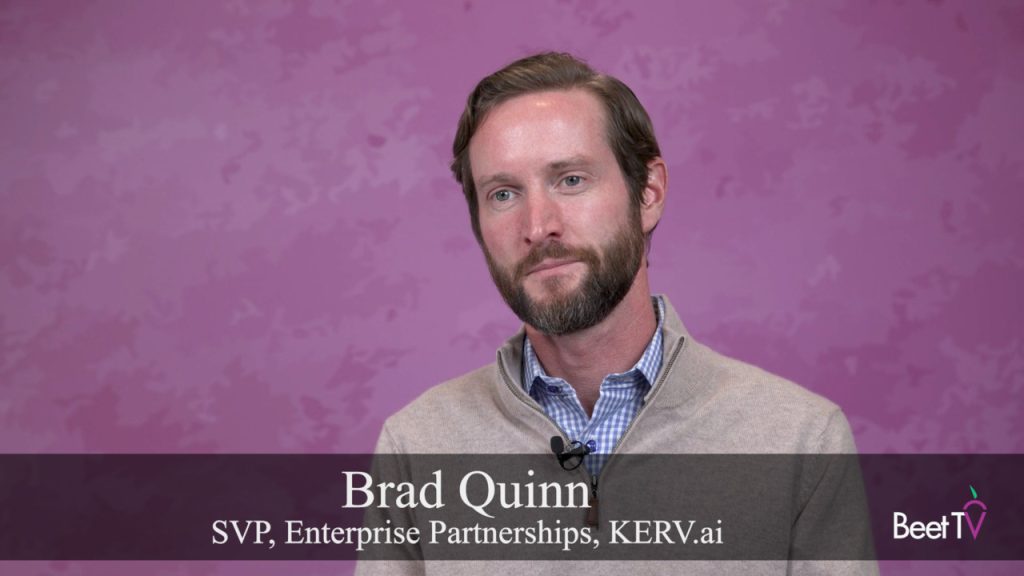COVID-19 lockdowns may have reduced the number of commuters listening to radio in their cars.
But the future nevertheless looks bright for anyone involved in audio programming.
In this video interview with Beet.TV, Michael Smith, NPR Chief Marketing Officer, says the public broadcaster’s podcast listenership is skyrocketing, with digital audio set to diversify still further.
Podcasts are booming
“People are not in their cars as much commuting – they’re working from home, which has decreased some of our radio listening,” Smith acknowledges.
“But it’s really helped drive amazing growth in our live station streams and in our podcast. We’re up 32% year-over-year in podcast listening. So I think we expect to see that continue as we go.”
NPR was an early pioneer in podcasting and distribution of live radio streams digitally.
The organization boasts a website reaching 20 million monthly users, the NPR One streaming app and, of course, a network of 264 member stations, radio shows that reach 24 million people each week, plus 25 podcasts, including eight in the top 20 podcasts in America.
Welcome Michael Smith, @NPR's new CMO!
“Michael is a strategic thinker and an extremely creative media executive who has spent his career finding new ways people consume content across an increasingly diverse audience population,” said @JohnLansing.https://t.co/OFdCjurBXj— nprextra (@NPRextra) April 1, 2020
An ad opportunity
That footprint isn’t only beckoning listeners. As the volume is turned up on streaming audio, advertisers, too – or, “sponsors”, as NPR would call them – are turning on.
“We’ve seen 400 new clients over the last few years who were traditionally buying digital, but now are buying audio,” Smith says.
“That’s because of the innovation in targeting and data that’s come to the audio space. It’s really been attractive to media planners at agencies.
“In fact, in response to agency demand, Nielsen has recently debuted a podcast planning tool, which we’re now a part of. So this data has just brought the magic of digital to a traditional medium like audio radio.”
https://twitter.com/Beet_TV/status/1333255334325063681
Audio’s advantages
Smith says podcasting and digital audio boast several advantageous characteristics for ad buyers:
- Age: “Our radio station broadcast audience is about 53 years old on average, but our podcast audience is in the mid to high 30s.”
- Reach: “Podcast listeners they tend to be heavier users of video streaming services like Netflix, and they are lighter users of ad-supported TV. So they’re really that hard-to-reach audience that advertisers are trying to reach these days.”
- Attention: “They tend to be much less likely to be distracted when they’re listening to audio, and it speaks to the immersive nature of the content.”
- Outcomes: “There are a lot of companies that have developed special tools which allow brands to see what percentage of their listeners who downloaded podcasts actually went on to visit their sites, and which of these people ultimately bought products.”
- Attribution: “So companies like Tru Optik and others have just been really innovating in bringing the power of data to podcasting.”
Rich palette of formats
To that end, NPR offers standard audio ad formats, but also what it calls “Brand Soundscapes” – segments scripted and produced by NPR’s Smith’s team, designed to capture listener’s imagination as bona fide content, or at least brand messaging that seems to fit between it.
The format comes in a variety of styles across podcasts, NPR.org, NPR’s app, NPR One and even voice assistants.
However, National Public Media lists 25 available ad formats overall – testament to the rich palette of devices now available to listeners and marketers alike.
Diversifying stories
If all that sounds fairly advanced, Smith says the audio opportunity is still actually just in “phase one”.
He says the radio space was “a little late” to digital innovation, behind printed newspapers and television, but that mobile phones, smart speakers and AirPods are lighting up the way ahead.
Despite being thought of as a music-centric channel, spoken-word programming’s share of audio is up 30% since 2014, according to research from Edison Research with NPR.
The Spoken Word Audio Report 2020 from NPR and Edison Research
For Smith, the growing listener base points the way to a more diverse range of stories.
“We’re seeing a lot of talk shows and traditional radio things, but I think the next wave is going to be more sophisticated storytelling,” he says.
“At some point, I think you’re going to see more even scripted content come to audio, almost kind of going back to the old War of the Worlds and the old CBS Radio Mystery Hour (radio dramas). I think it’s an exciting space to be in.”
You are watching “Advertisers: Turn Up the Volume on Streaming Audio,” a Beet.TV leadership video series presented by Tru Optik. For more videos, please visit this page.





































